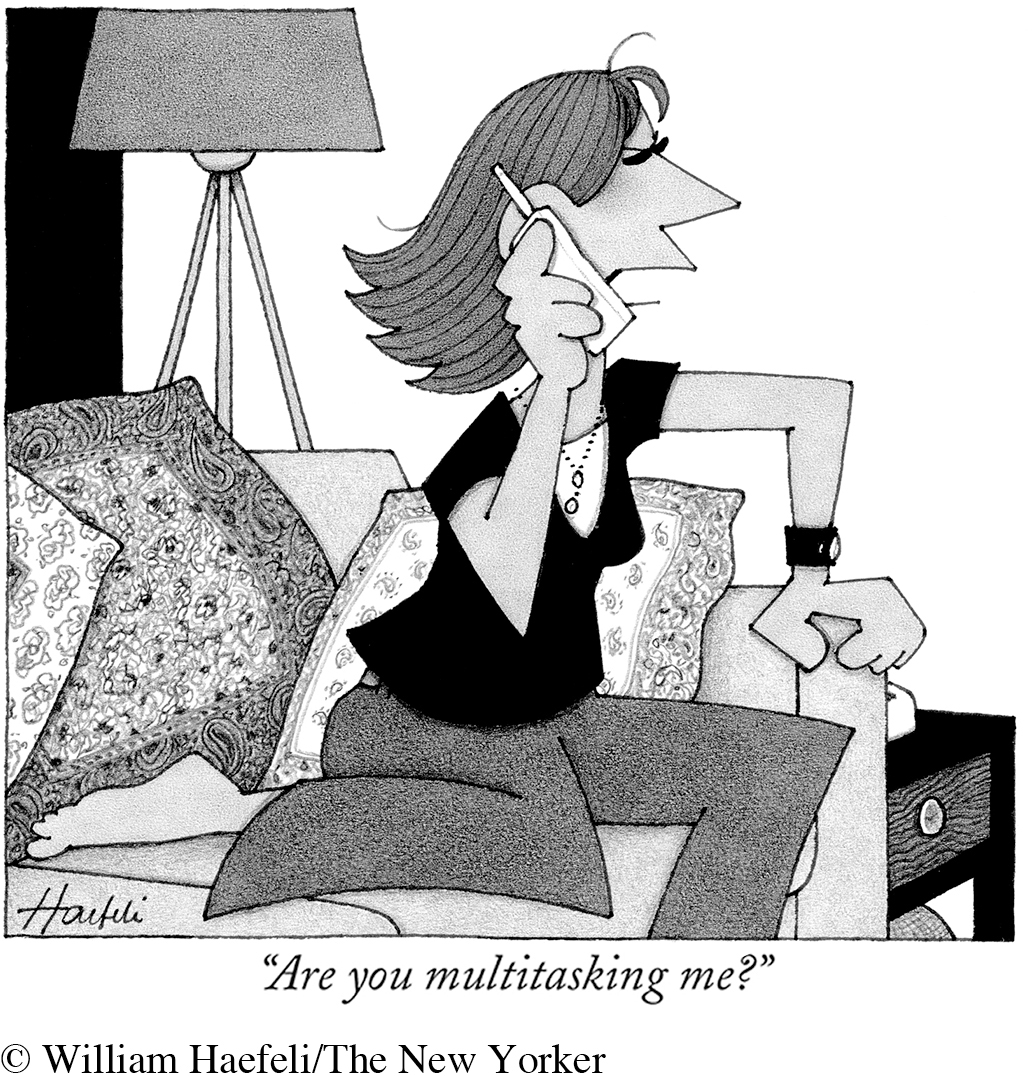Friendship Challenges
Ashlee and Rachel were best friends throughout high school.2 As Ashlee describes, “Rachel was brilliant, confident, blunt, and outgoing. She liked to mock people, but she could make me laugh like nobody else, and she loved the same things I did.” After graduation, they were parted by distance: Rachel went to Stanford, while Ashlee attended the University of Washington. Although they regularly texted and e-mailed, they grew apart. The following summer they were reunited, this time as a foursome: Rachel was dating Mike (a friend from high school), and Ashlee was dating Ahmed, a Lebanese transfer student. The four hung out regularly, waterskiing, going to movies, and partying.
One day, after Mike bought a new iPhone, he offered his old one to Ashlee. Arriving home, Ashlee found that her SIM card wasn’t compatible, so she started manually clearing Mike’s information. When she got to his text in-box, she was stunned to see this message from Rachel: “Ashlee and Ahmed are the perfect couple: stupid sorority slut and steroided camel jockey.” As Ashlee describes, “My heart just stopped. I literally sat there, shaking. I thought it was a joke, until I scrolled down and found hundreds of similar messages.” Text after text slammed Ashlee and mocked Ahmed’s ethnicity. Later that night, crying hysterically, Ashlee summoned the courage to text Rachel: “I cleared out Mike’s phone and found all your texts about me and Ahmed. You two are horrible. I want nothing to do with either of you.” Rachel immediately texted back, “How dare you read our messages! Those were private! Whatever, Ashlee—I’m sorry you’re angry, but Mike and I were just messing around. You’re completely overreacting.” In the aftermath, Ashlee returned Mike’s iPhone and refused all contact with Rachel. Back at school that fall, Ashlee received an e-mail with the subject line, “please don’t delete.” The message read: “I don’t even know where to begin. I know I messed up, but I can’t lose you as a friend. We’ve been best friends forever, and I’d hate to lose you over something this dumb. I know I’m asking a lot of you to forgive me, but please think about it.” Ashlee deleted the message.

To this point, we’ve talked about friendships as involvements that provide us with abundant and important rewards. Although this is true, friendships also present us with a variety of intense interpersonal challenges. Three of the most common are friendship betrayal, geographic distance, and attraction.
BETRAYAL
Given the value friends place on mutual support and defending each other, it’s no surprise that betrayal is the most commonly reported reason for ending a friendship (Miller, Hefner, & Scott, 2007). Acts of friendship betrayal include breaking confidences, backstabbing (criticizing a friend behind his or her back), spreading rumors or gossip, and lying—all of which violate the friendship rules discussed earlier. When friends violate these rules, it’s difficult for friendships to survive. Similar to romantic betrayal, friends who are betrayed experience an overwhelming sense of relationship devaluation and loss (Miller et al., 2007). And—as with the Ashlee and Rachel example—betrayal often leads people to realize things about their friends’ characters that simply can’t be tolerated.
How can you better manage friendship betrayal when it occurs? If it’s a friendship of any closeness, expect to experience grief as you suffer the loss of trust, intimacy, and the image of your friend you once held dear. Revisit the suggestions for grief management offered in Chapter 4, especially the value of emotion-sharing—talking about your experience directly with people who have gone through the same thing. Avoid lashing out at the betrayer or seeking revenge, both of which will simply make matters worse.
skillspractice
Managing Friendship Betrayal
If you find yourself in a situation in which a friend betrays you:
Manage the intense anger and grief you experience.
Avoid seeking revenge or verbal retaliation.
Contact others who have experienced similar betrayals, and discuss your experience with them.
Evaluate the betrayal, including how serious it is, what caused it, whether it’s a one-time event or part of a behavioral pattern, and whether you would have done something similar.
Assess the value of your friendship, compared with the damage of the betrayal.
End or repair the friendship based on your analysis.
When you’re able, ponder whether you can or should repair the friendship. Ask yourself the following questions to help guide your decision. First, how serious was the betrayal? Not all betrayals are of equal standing, so think carefully about whether this incident is something you can learn to live with or not. Second, what was the context preceding and surrounding the betrayal? Did you do something to provoke the betrayal? Would you have done the same thing in the same situation—or have you done similar things in the past? Be careful about blaming others for behaviors that you caused, holding double standards, and judging friends in ways you wouldn’t wish to be judged yourself. Third, do the benefits of continuing the friendship outweigh the costs? Use the friendship rules as a guide: Does your friend follow most of these rules, most of the time? If so, he or she may actually be a desirable friend. Fourth, is this betrayal a one-time event or part of a consistent pattern? Everyone falls from grace on occasion; what you want to avoid is a person who habitually abuses your trust. Last, and perhaps most important, does this betrayal reveal something about your friend’s character that you simply can’t live with? Be honest with yourself and realize that some friendships are best left broken following betrayal. In Ashlee’s case, despite years of having Rachel as her best friend—and the corresponding energy, time, and emotional investment—the betrayal revealed multiple aspects of Rachel’s character that Ashlee simply couldn’t tolerate, including sexism, racism, phoniness, and viciousness.
GEOGRAPHIC SEPARATION

A contributing factor to Ashlee and Rachel’s falling-out was their geographic separation, which led them to grow apart. Separation is one of the most common and intense challenges friends face (Wang & Andersen, 2007). Upwards of 90 percent of people report having at least one long-distance friendship, and 80 percent report having a close friend who lives far away (Rohlfing, 1995). Physical separation prevents friends from adequately satisfying the needs that form the foundation of their relationship, such as sharing activities and practicing intimate self-disclosure.
Although most friends begin long-distance separations with the intention of seeing each other regularly, they rarely visit solely for the sake of reuniting. Instead, they tend to see each other only when there’s some other reason for them to be in the same area. This is because long-distance friends often don’t have the money or time to travel only to visit a friend (Rohlfing, 1995). Instead, they visit when other commitments, such as professional conferences, visits with relatives, or class reunions, bring them together. Such contacts often leave friends feeling empty because their time together is so limited.
skillspractice
Using Technology to Overcome Distance
Maintaining long-distance friendships through online communication
Think of a close friend who lives far away.
In your online interactions, focus your message content on common interests, making sure to ask about your friend’s continued participation in these things.
Send text messages saying you’re thinking of and missing her or him.
Craft e-mails that fondly recap past shared experiences.
Forward Web links with ideas for future activities you can share together.
When your friend discloses major life changes, provide support in the quickest fashion possible, whether by text message, e-mail, phone call, or all three.
Which friendships tend to survive geographic distance, and which lapse? In friendships that survive, the two people feel a particularly strong liking—affection and respect—for each other. Friendships between individuals who “enjoy knowing each other” and “have great admiration for each other” are most likely to endure.
Friends who overcome separation also accept change as a natural part of life and their relationship. If you get together with a good friend you haven’t seen in a long while, you both will likely have changed in terms of profession, attitudes, and appearance. Friends who are comfortable with such changes and offer identity support tend to have relationships that survive. Friends who want their friends to “always stay the same” don’t.
Moreover, friendships that survive separation involve friends who have a strong sense of shared history. In their conversations, they frequently celebrate the past as well as anticipate sharing events in the future. This sense of shared past, present, and future enables them to “pick up where they left off” after being out of touch for a while. Successful long-distance friendships thus involve feeling a sense of relationship continuity and perceiving the relationship as solid and ongoing.
How can you communicate in ways that foster these qualities in your own long-distance friendships? Use technology (Skype, Facebook, phone, text, etc.) to regularly communicate with your friends. Focus your communication on activities and interests that you share. Doing this alleviates the feeling of loss that comes with the inability to actually spend time together (Rabby, 1997). So, for example, if a friend who now lives far away used to be your daily workout or jogging buddy, send her regular e-mails or texts updating her on your marathon training and inquiring about her performance in local races.
Also, remind your long-distance friends that you still think of them with affection and hold them in high regard. Look for opportunities to appropriately express your feelings for a friend, such as, “I miss our Thursday night movie watching! Have you seen any good films lately?” In addition, devote some of your communication to fondly recounting events and experiences you have shared in your past, as well as discussing plans for the future. Such exchanges bolster the sense of relational continuity critical to maintaining friendships.
Finally, when your long-distance friends go through dramatic life changes—as they inevitably will—communicate your continued support of their valued social identities. For instance, a close friend you haven’t seen in a while may abandon previously shared religious beliefs, adopt new political viewpoints, or substantially alter his or her looks. In making these and other kinds of significant changes, your friend may look to you for identity support, as a friend. A good long-distance friend of mine, Vikram, occupied a job for several years that required a fair degree of professional contact with me, allowing us the opportunity (and excuse) to communicate regularly. Then he accepted a new position with a different company. This new opportunity represented a dramatic professional advancement for him, but it also meant we would have far fewer opportunities to interact once he started the new job. When he broke the news to me, he expected a certain degree of rancor on my part. Instead, I surprised him by expressing my firm support and excitement regarding his decision, even though I knew that, owing to this change, our paths wouldn’t cross nearly as often.